Khiva, Uzbekistan – 6/2014
Escaping from Turkmenistan with full tanks of $1.00-per-gallon diesel, we entered Uzbekistan. Of all the countries we would visit following the Silk Road, Uzbekistan was certainly one of the most anticipated. Along with Samarkand and Bukhara, Khiva was an important trading point on the historical Silk Road. It was also famous for its long and brutal history as a slave trading post, sandwiched in-between the vast Kyzylkum and Karakum deserts, the latter of which we had just driven across.
We had obtained our visas from StanTours and they had arranged permission for us to wild camp two out of every three days. There may have been sections of the old Silk Road along the Amu-Darya River with at least one caravanserai on the Turkmeni side but that was out of the question. Turkmenistan immigration had made that impossible.
Given the oppressive heat and the fact that Khiva was only 38 miles away, we headed for our first hotel since we left Portugal with the bit firmly clenched in our teeth. This gave us a chance to relax in a sort-of air-conditioned environment, do a wash in the bathtub, change money and take a walk through the amazing streets of the old city. Unfortunately, much of the town inside the fortress walls had been scrubbed tourist-clean by the Soviets in the 1970s. Nevertheless, as we wandered amongst the madrassahs, (schools), and craned our necks at the spectacularly tiled minarets, we tried to get a sense of how crowded and bustling this town must have been throughout its history. It was not hard to imagine why Khiva is still considered an important center of Islam. The old walled town called Itchan Kala was recognized as a World Heritage Site by UNESCO in 1990.
According to legend, Khiva was founded about 2,500 years ago when a son of Noah, Shem discovered a well in the middle of the desert and exclaimed “Khi-wa!” which could be roughly translated as “sweet water”. The Khanate of Khiva was a Central Asian Turkic state. The Khans (“kings”) were direct patrilineal descendants of Ghengis Khan and ruled for over 400 years (1511-1920). The amazing examples of Islamic architecture were built over a span of 600 years and stand as a reminder of Khiva’s greatness as a center of Islamic power. Today, the entire city is home to about 40,000 people, most of whom live outside the walls of the original town.
The photos and captions with this blog will give you a feeling of our experience of Khiva, but of course it is only a taste of this part of the Silk Road we have followed since driving away from the wave-torn cliffs of Portugal’s Cabo da Roca, the most western point in continental Europe and in fact, the most western point of the Eurasian landmass where we began The Trans-Eurasian Odyssey. Unknown adventures lie ahead. Already we were hearing of the difficulties of driving in China and before that, the dreaded “Tunnel of Death” in Tajikistan. We can hardly wait??
- The comfortable hotel Sabir Arkanchi was our first since leaving Portugal. It had safe parking for The Turtle V
- The hotel was air-conditioned and within walking distance through the west gate to the old town of Khiva.
- Not having done a wash since we left Cappadocia in Turkey, the bathtub in our hotel room made the perfect place.
- We strung up a few lines in the room to dry clothes.
- One US dollar was the equivalent of 3,277.50 uzbek SOMs. Monika changed a hundred dollar bill for some spending money while we were in the country.
- Our first night in town we splurged and went to the Zarafshan Tea House that was recommended by Lonely Planet.
- We had to try the famous green bean dish that went well with a glass of wine and a cold beer.
- The Decor in the Zarafshan Tea House was beautiful including some traditional wall hangings.
- Early in the morning locals were on the way to work. This is still a very manual labor culture.
- There is always room for flowers in the desert.
- In this heat no one sleeps inside unless they have to.
- Some of the old carved doors showed the age of this historic town.
- Hey, when you gotta pee you gotta pee. Not too many bathrooms around.
- This was the official dumpsite for your night pot, an indication that many of the houses may not have had indoor toilets.
- We found these expertly carved pillars supporting buildings and roofs throughout town.
- This beautiful mural gave us the feeling that we were definitely on the Silk Road.
- We didn’t really drive inside Itchan Kala, old Khiva, but we couldn’t resist passing through the Ata-Darwaza (West Gate) near our hotel.
- The impressive walls surrounding Itchan Kala, the old city of Khiva, look virtually impenetrable.
- Climbing to the top of the ramparts, the view was spectacular.
- We couldn’t take enough photos of the impressive Kalta Minor Minaret. It was supposed to become the most grandiose in the whole Muslim world.
- Left unfinished when Khivan ruler Muhammad Amin Khan died in 1855, the tower stands toady at 29 m (95 ft.) instead of the intended 70-80 m (230-260 ft.).
- This was the entrance gate to the Tosh Hovil Palace where the Khan used to live with his four legal wives and forty concubines. Trump would like this place.
- Strolling through the old oasis of Khiva there were many opportunities to discover its historic sites.
- The Majolica tile work on many buildings was very beautiful.
- Completed in 1874, the Muhammad Rakhim-khan Madrassah was a Muslim university where theology students could also studied exact science and poetry. Its huge portal was finished with sky-blue majolica.
- For us, the Islam-Khodja minaret was the most beautiful in Itchan Kala, the old town of Khiva.
- The Islam-Khodja minaret is supposedly 146 ft tall.
- The Said Alauddin Mausoleum is one of the most historic buildings in Central Asia. The revered sheikh died in 702 of hijra (1303).
- The Islam-Khodja Complex had some of the most beautiful tile work in old Khiva.
- The entrance to the Islam-Khodja Complex let us to the museum of applied arts.
- The statue of Marco Polo paid tribute to the great explorer’s visit.
- The making and marking of Nan, the local flat bread, ready for the wood-fired clay oven.
- The thinly shaped dough is slapped onto the inside wall of the hot clay oven.
- At a precise moment, the Nan is grabbed with a mitt, ready to eat. Pass the butter please.
- After watching the interesting process, the lady presented Monika a piece of Nan as a gift. We shared it with fellow travelers.
- More labor. Trash is carried by hand and water is pumped from a well. Bags and hand water pumps are a relatively modern invention.
- This guy in his little fix-it shop could probably repair most electronics we would throw away and buy a new one.
- Hardware and clothing stores appeared each morning on the streets.
- We always love the beautiful and functional “Russian” booms. We have several of these “cordless” vacuums in our home.
- Open markets are a great place for real people photos and these women did not mind the attention.
- We love local markets anywhere in the world.
- Oh Oh!—Looks like we missed the best cuts of meat today.
- Fresh apricots are a specialty of this part of Asia, and we would soon see them at roadside stands in every village we passed.
- Market food stands are some of the safest in any country, cooked fresh to your order.
- Locals were happy and amazed that we had come so far to visit their country. Clearly, their hearts beat the same as ours.
- Monika had an instant heart-felt connection with this beautiful old woman selling tasty toasted squash seeds.
- We were surprised to see this western style wedding dress in a Muslim country, perhaps a carryover from the Russian presence or just a fashion statement.
- Boys will be boys in any country. They invited us to join them for a cool swim.
- Children are always a special part of our experience of new cultures.
- We were invited to attend this English class to give the students some much needed practice. They were surprised to hear that Monika speaks five languages. The energetic teacher curiously inspected her Swiss passport.
- We asked this camel what he thought about President Trump. He choked, belched, gagged and spat.



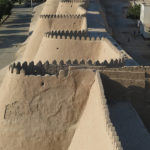

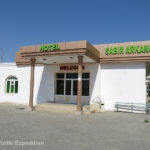
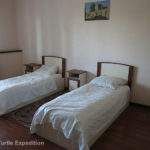

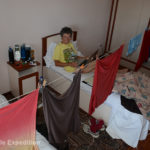

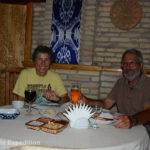

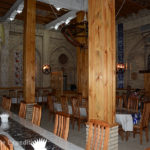
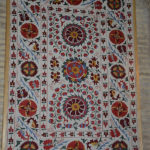
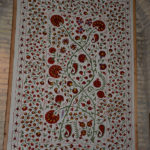
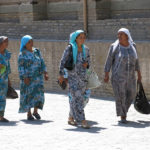
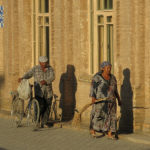
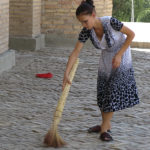
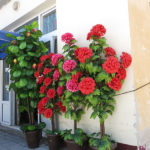
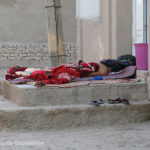

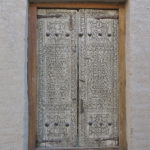
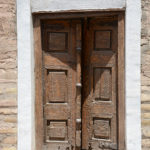
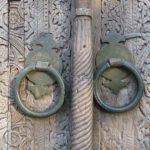
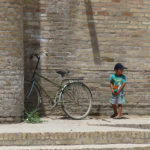
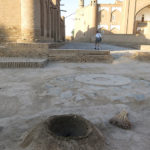
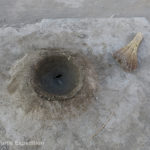
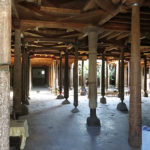
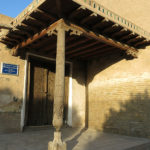
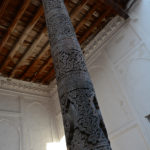
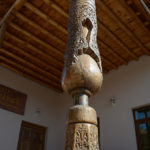
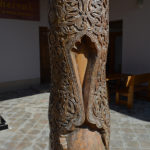
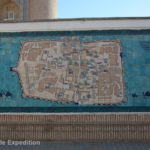
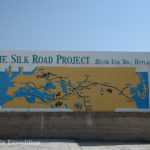
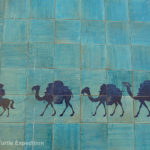
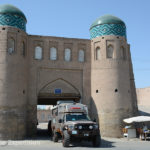
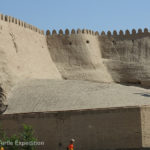
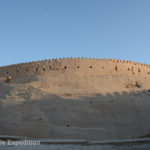
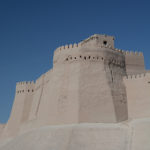
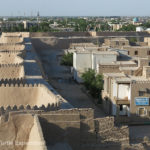
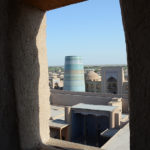
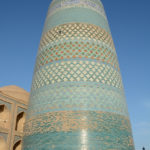
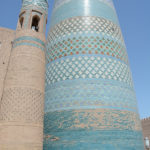
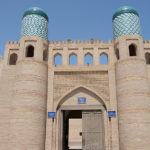
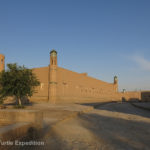
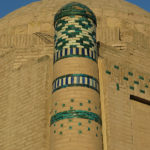
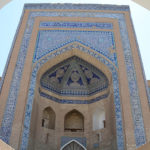
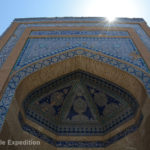
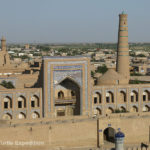
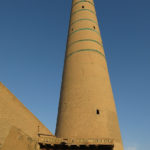
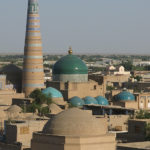
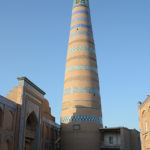
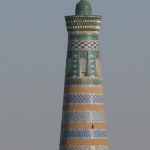
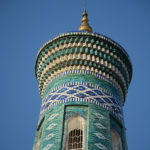
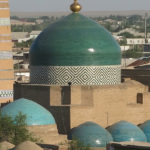
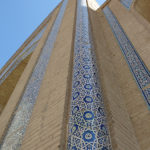
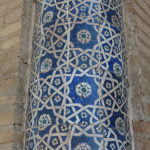
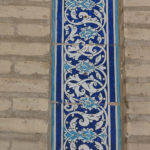
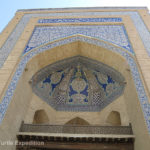
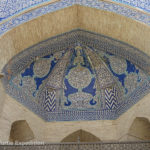
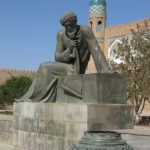
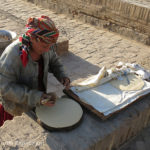
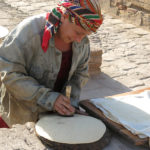
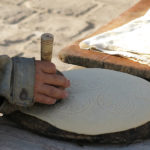
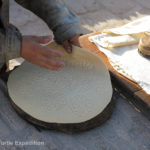
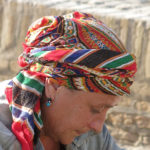
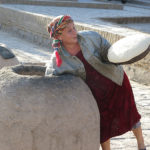
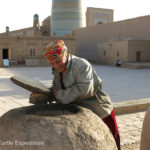
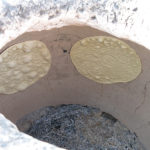
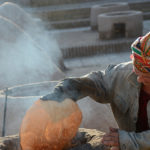
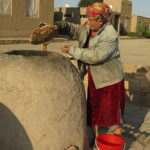
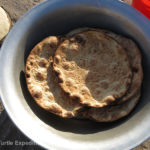
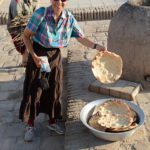
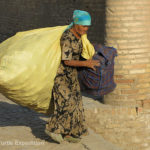
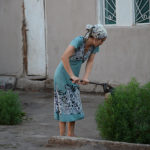
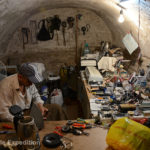
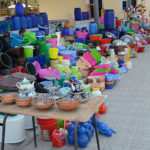
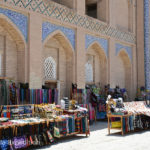
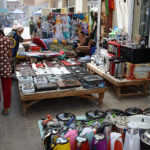
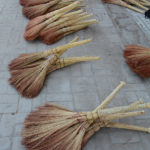
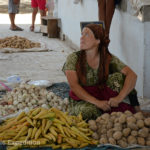
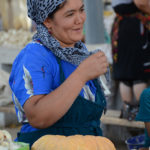
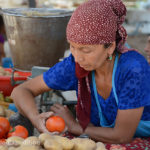
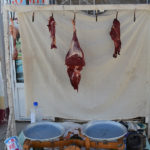
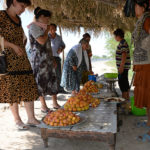
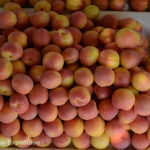
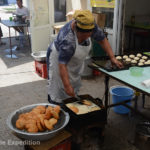
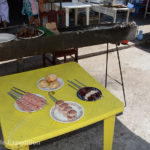
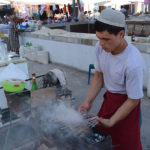
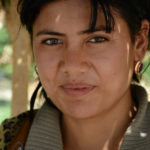

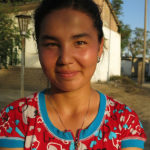
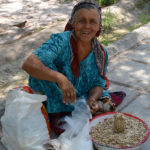
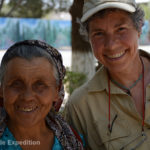
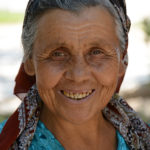
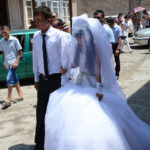
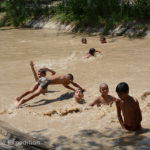





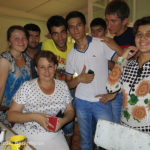






Leave a Comment